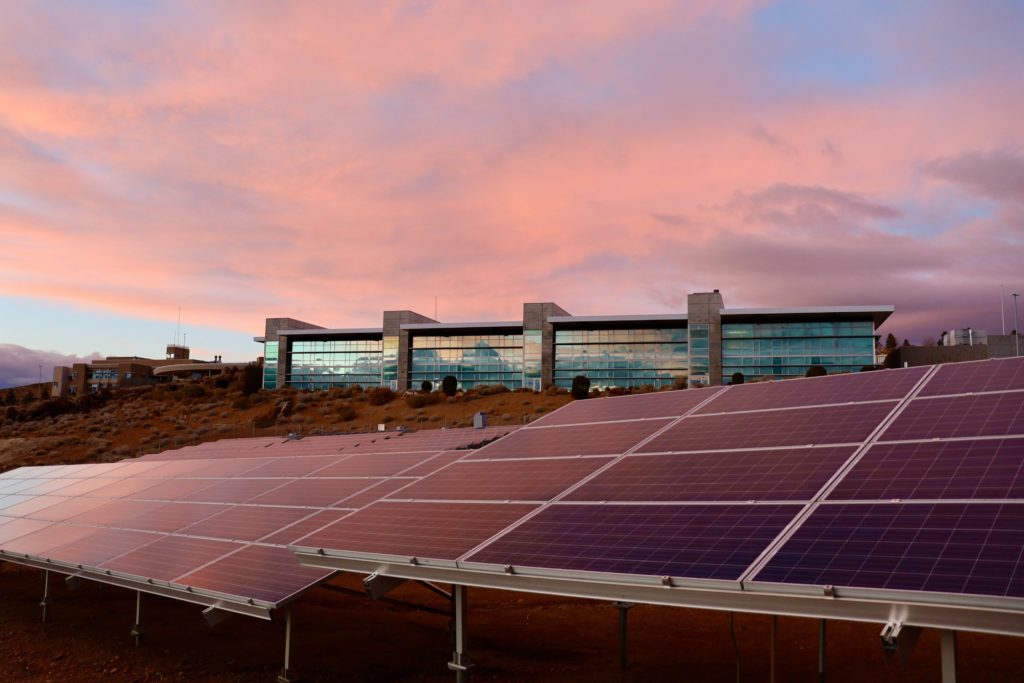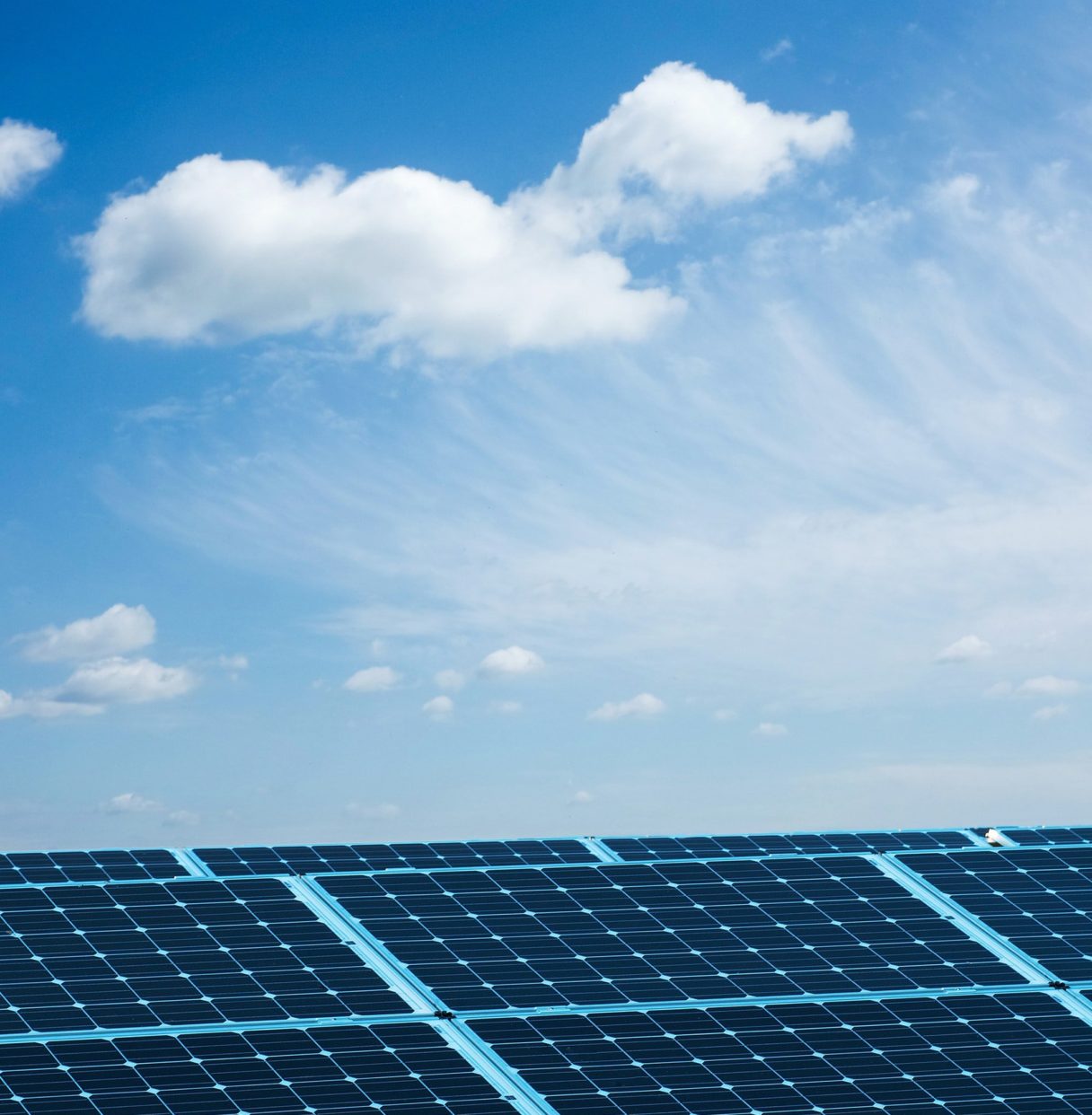Today, photovoltaic panels are increasingly used to generate renewable electricity from sunlight. These panels are made up of photovoltaic cells, which convert sunlight into electricity through the photovoltaic effect. They are usually made from silicon, a semiconductor material that can produce electricity when exposed to sunlight. They are used to power homes, businesses, public buildings, and even electric vehicles.
Are you curious about the technology behind the solar panels that are powering more and more homes and businesses? Are you looking for solutions for greener and more sustainable energy?
In this article, we will explain in detail what a photovoltaic panel is, how it works and why it has become a popular choice for renewable energy production. We will also discuss the advantages and disadvantages of using photovoltaic panels, as well as the latest technological advances in this ever-changing field.
What is a photovoltaic panel?
A photovoltaic panel is a device that converts sunlight into electricity using the photovoltaic effect. Photovoltaic panels are usually composed of solar cells, which are electronic devices that convert sunlight into electricity. These solar cells are made from semiconductor materials such as silicon, which can produce electricity when exposed to sunlight.
When sunlight hits the solar cell, it is absorbed by the semiconductor material, causing electrons to be released. These electrons are then captured by conducting wires embedded in the solar cell, creating an electric current. This electric current can then be used to power electrical appliances or stored in batteries for later use.
Photovoltaic panels are increasingly being used to generate renewable electricity on a large scale, to power homes, businesses, public buildings, and even electric vehicles. They are considered a clean and sustainable source of energy because they do not produce greenhouse gases or other air pollutants when they generate electricity.
How does a photovoltaic solar panel work?
Photovoltaic solar panels are usually installed in places where they can receive the most sunlight possible, such as on the roofs of houses, commercial or industrial buildings, or in solar fields. When connected to an electrical system, they can produce electricity that can be used to power buildings or electrical equipment. In off-grid solar systems, the electricity can be stored in batteries for later use when the sun is not shining. Solar photovoltaic panels are increasingly being used to meet the world’s energy needs, while reducing dependence on fossil fuels and cutting greenhouse gas emissions.
What is the difference between thermal and photovoltaic solar panels?
Solar thermal panels and solar photovoltaic panels are both used to capture solar energy and convert it into usable energy, but they work differently and are used for different applications.
A solar thermal panel is designed to heat a fluid, such as water or air, using heat from the sun. The heated fluid can then be used to heat domestic water, power a central heating system, or produce steam to generate electricity. Solar thermal panels are often used in solar home heating systems or for domestic hot water production.
A photovoltaic solar panel, on the other hand, is designed to convert sunlight into electricity. The solar cells inside the PV solar panel convert light directly into electricity, which can then be used to power electrical appliances or stored in batteries for later use. Photovoltaic solar panels are often used to generate electricity on a large scale for homes, businesses, public buildings, and industrial facilities.
In summary, the main difference between a solar thermal panel and a solar photovoltaic panel is that the former is designed to produce heat, while the latter is designed to produce electricity. Both technologies are important for the use of solar energy and can be used together to maximize the use of this energy in a variety of applications.


Can you install photovoltaic panels yourself?
The installation of a solar PV panel can be done by a private person, but this depends on various factors, such as technical skills, electrical knowledge and local regulations.
Installing a solar PV array, yourself can be a complex and potentially dangerous task, as it involves working with electrical wires and high voltage electrical equipment. In addition, incorrect installation can lead to safety or performance problems, which could cause damage to equipment or property.
For this reason, it is recommended that a certified professional installer be used to install a solar photovoltaic system. A professional installer will have the skills and expertise to ensure a safe and efficient installation, while complying with local and national regulations.
However, if you are an experienced DIYer with technical skills and electrical knowledge, and if you have the appropriate tools and equipment, it is possible to install a small solar PV system yourself for your own use. It is important to understand local and national regulations, to follow the instructions of the solar panel manufacturer and to take all necessary precautions to ensure the safety of the installation.
What are the advantages and disadvantages of this energy production system?
There are several advantages to using photovoltaic panels for your energy consumption, including.
1. Energy savings
Photovoltaic panels can produce electricity for free from sunlight, you will significantly reduce energy consumption costs in the long run.
2. Renewable energy
Photovoltaic panels use a renewable energy source, the sun, to generate electricity, helping to reduce dependence on fossil fuels and reduce greenhouse gas emissions. Unlike fossil fuels, which produce environmentally harmful emissions, solar panels do not require fuel and do not produce polluting waste.
3. Inexhaustible energy source
Solar energy is an inexhaustible renewable energy source, as it depends on sunlight, which is freely available in abundance on the planet. Solar panels can therefore provide a clean and sustainable source of energy for homes, businesses, and communities.
4. Low maintenance
They typically have a lifespan of 25 years or more and require little maintenance, which can reduce long-term costs.
5. Flexibility
They can be installed on a variety of surfaces, including building roofs, canopies, walls and grounds, making them suitable for a wide range of applications.
6. Independent power
These solar panels provide an independent source of electricity, which can be particularly useful in remote areas or regions where access to electricity is limited. In addition, they can be installed anywhere, making them particularly useful in remote areas where access to electricity is limited.
7. Added value to the property
The installation of PV panels can add value to a property by increasing its energy efficiency and making it more attractive to potential buyers.
Although PV panels offer many advantages, there are also some disadvantages to consider, including:
1. High initial cost
Installing a PV panel system can be expensive, especially for large installations. However, costs have come down considerably in recent years due to increased production and improved technology.
2. Weather dependency
PV panels rely on sunlight to generate electricity, which means that their performance can be affected by weather conditions, such as clouds, fog and snow.
Latest technological developments
There are several recent technological advances in photovoltaic panels that have the potential to improve the efficiency and sustainability of these systems:
Concentrating Power Solar Panels (CPV)
These panels use lenses or mirrors to concentrate sunlight onto small, highly efficient solar cells. CPV panels have a higher efficiency than conventional solar panels and can be particularly useful in areas of high sunlight.
Organic solar panels
Organic solar panels are made from organic materials, such as polymers, which can be printed onto flexible substrates. This technology is still under development, but offers potential advantages in terms of production costs, weight, and flexibility.
Hybrid solar panels
Hybrid solar panels combine several technologies, such as electricity generation and heat production, to maximize the use of solar energy. These systems can be particularly effective for residential and commercial applications.
Perovskite solar cells
Perovskite solar cells are a promising new technology that has seen rapid improvements in efficiency in recent years. Perovskite solar cells can be made from cheaper materials than silicon solar cells, but they also present challenges related to their long-term stability.
These technological advances have the potential to significantly improve the efficiency, durability, and cost of photovoltaic panels. However, it is important to note that these technologies are still under development and will take time to become widely available on the market.


